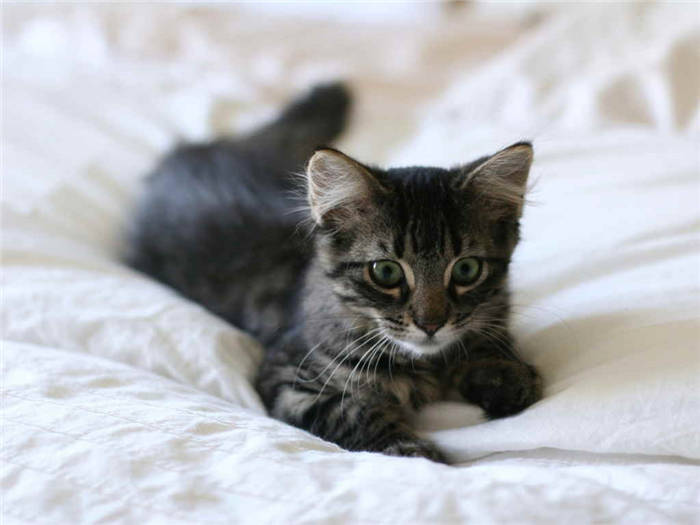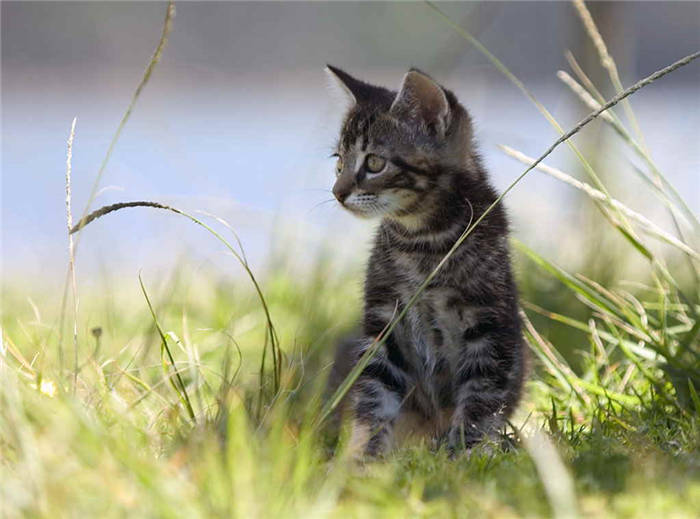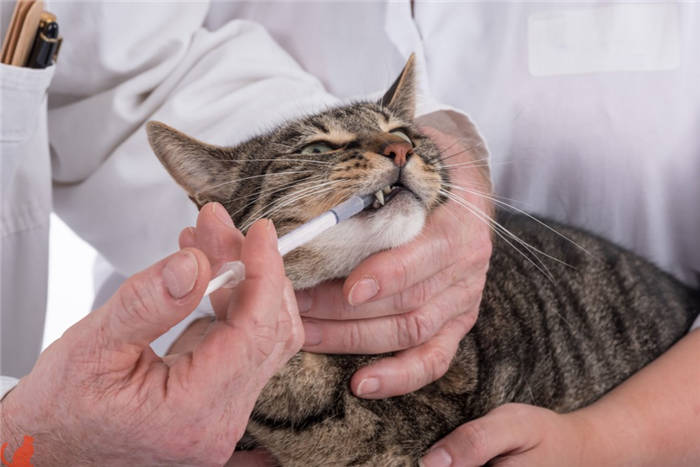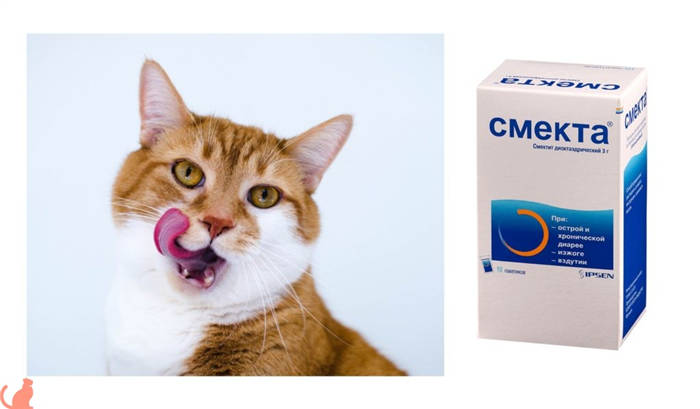Smecta is used as a first aid for diarrhea and/or vomiting in cats with gastrointestinal disorders. The causes of diarrhea and vomiting can be varied:

How do I give Smecta to a cat with diarrhea?
It's no secret that just born kittens need complete care and care. In particular, issues relating to nutrition require proper attention from the owners, because the digestive system of a furry baby continues its formation. Often, because of the frequent intestinal disorders of the animal have to seek help from specialists. In turn, the cat at any age, most often doctors prescribe "Smecta".

Why does the disorder occur in kittens?
Often with the beginning of a dramatic change in the pet's diet, that is, with the transition from mother's milk to artificial food, digestive failures may occur. Veterinarians say that it is not advisable to accustom the baby to adult food before one month of age. Avoid stomach and intestinal problems by giving lightly moistened food, which will help the digestive system adapt more quickly after liquid milk.
Meanwhile, not many people know how to give a pet the right drug. The method of administration, dosage and other important points worry the owners, because, first of all, "Smecta" is intended to relieve people from diarrhea. It turns out that in case of intestinal disorders, this medicine is indispensable for animals as well. Familiarizing yourself with the instructions for use of the drug, you can easily figure out how best to give "Smecta" to a cat.
Indications for use and mechanism of action
Veterinarians recommend using the drug to help with poisoning, as it is considered the safest. It has a selective effect, does not inhibit the activity of beneficial microorganisms colonizing the small intestine, does not violate the integrity of the mucous membrane lining the digestive tract and digestive organs. Does not adversely affect motility.
Appointed Smecta cat for vomiting caused by poisoning, diarrhea, intoxication, for the treatment and prevention of allergies, in the case when the animal ate low-quality food, or against the use of medications.
The solution, entering the intestine, together with the mucous secretion forms a viscous substance that adsorbs toxins and pathogens in the lumen of the organ. Thanks to its enveloping action, smectite dioctahedral binds dangerous compounds and removes them from the body naturally. It is not absorbed into the bloodstream. The action begins as soon as it enters the stomach. A protective layer is formed on the mucosa, reducing the load on the digestive tract.
Before giving the medicine to the animal, it is necessary to consult a veterinarian. One of the contraindications to use is intestinal obstruction. It is necessary to make sure that there is no history of this diagnosis.
Dosage and method of administration for cats and kittens
It is advisable to begin treatment in the first day of the appearance of dangerous symptoms. After 20 hours Smecta will no longer help, with dehydration will require intensive therapy.
The medicine is typed into a syringe without a needle and injected into the throat, in one procedure half a cc or 5 ml of the solution for an adult cat and 2 ml for a kitten. Which method to choose for fixation, so as not to traumatize the animal and not to scratch the claws, depends on the condition of the "patient". As long as the adult cat is not weakened, it is difficult to cope with it. It is best to wrap the pet in a thick cloth – just don't pull it down so as not to cause unnecessary pain – turn it with its back to you and, without pressing down hard, insert the syringe into its mouth from the side, inserting the tip deeper into the mouth.

You can do without swaddling. In this case the cat is firmly held across the torso with a hand, so that the head is under the neck. Lowering the chin, fix the head of the animal, and inject the medicine. It is important to position the animal so that it cannot reach the person's hands with its back paws.
There is another way to give Smecta to a kitten or an adult cat, which is more convenient for owners. The suspension is diluted thicker and the contents of the syringe are squeezed into the mouth under the lip. Even if it gets out, the animal will still lick it off.
The interval between infusions is 1-2 hours, until the dangerous symptoms disappear. If the condition does not normalize within 8-10 hours, you should contact your veterinarian.
Lactation and pregnancy of cats are not contraindications for the use of Smecta. No dosage adjustment is required.
All information on this website is provided in accordance with the User Agreement and does not constitute a direct order to action. We strongly recommend that you seek personal advice from an accredited veterinary clinic before using any products.
How to give Smecta to a cat: technique
Veterinarians recommend force-feeding the required amount of Smecta with a syringe (be sure to remove the needle!).

- To give the drug to the kitty, it is necessary to fix it with a towel and protect yourself from sharp claws and teeth.
- Next you need to take the cat firmly by the scruff of the neck and slightly tilt its head back.
- Carefully insert the spout of the syringe (without the needle!) into the oral cavity at the side and squeeze the contents onto the root of the tongue, in small portions, until the whole volume of the syringe is drunk. It is better to perform the manipulation in pairs – one person fixes the animal and the other feeds the drug.
- Read more about the process in one of our previous materials.
If mixed with food, the drug does not have the desired effect, all the more so as the cat, smelling a strange odor from the food, may refuse to eat it.
Contraindications to Smecta
- individual intolerance to the drug;
- Complete or partial occlusion of the intestine (foreign body – a piece of toy, a lump of fur, etc.);
- tendency to constipation (Smecta does not reduce intestinal peristalsis, but due to its adsorbing action the stool mass will be denser; if the animal has reduced peristalsis, dense stool mass may accumulate in large quantities, which will further lead to constipation (constipation)).
In this section, let's look at Smecta analogues that may be prescribed by a veterinarian:
- Enterosgel . – a medical product containing polymethylsiloxane polyhydrate, available as a gel paste. Tasteless and odorless, well tolerated by nursing, pregnant cats and kittens. The dosage for an average cat of 3-4 kg is 1 teaspoon 2 hours before meals, up to 3 times a day. Usually the drug is taken until normalization of fecal consistency, on average 2-3 days. It may be mixed with a little water to make the preparation more fluid, in which case it will be easier for the animal to drink it.
The dosage and course of administration for kittens is calculated only by a veterinarian, as an excessive dose can lead to constipation. - EnteroZoo – A veterinary drug, an analogue of Enterosgel in its properties and form of release. Dosage for cats and kittens up to 2 kg – 1 teaspoon (about 5 g of the preparation), for cats weighing more than 2 kg – 2 teaspoons 2 times a day. Can also be diluted with a small amount of water.
- Polysorb – medical drug, comes in the form of white powder for preparation of suspension for oral administration, the active ingredient is colloidal silicon dioxide. Dosage of Polisorb for cats 0.05 – 0.15 g per kg of animal weight (for ease of dilution – 1 teaspoon contains about 1 g of the drug). The resulting suspension is given 1-2 hours before feeding, up to 3 times a day (depending on the severity of the condition).
- Activated charcoal – A medical formula, available as black tablets. Not commonly used in veterinary medicine due to high dosages (4 pills per 1 kg of body weight) and inconvenience of use – pills can stick to the tongue or throat; when diluted in water, itch and have a very bitter taste (cats are very negative to bitter drugs, often even vomiting may occur after taking these drugs). It can be used as an emergency treatment.






